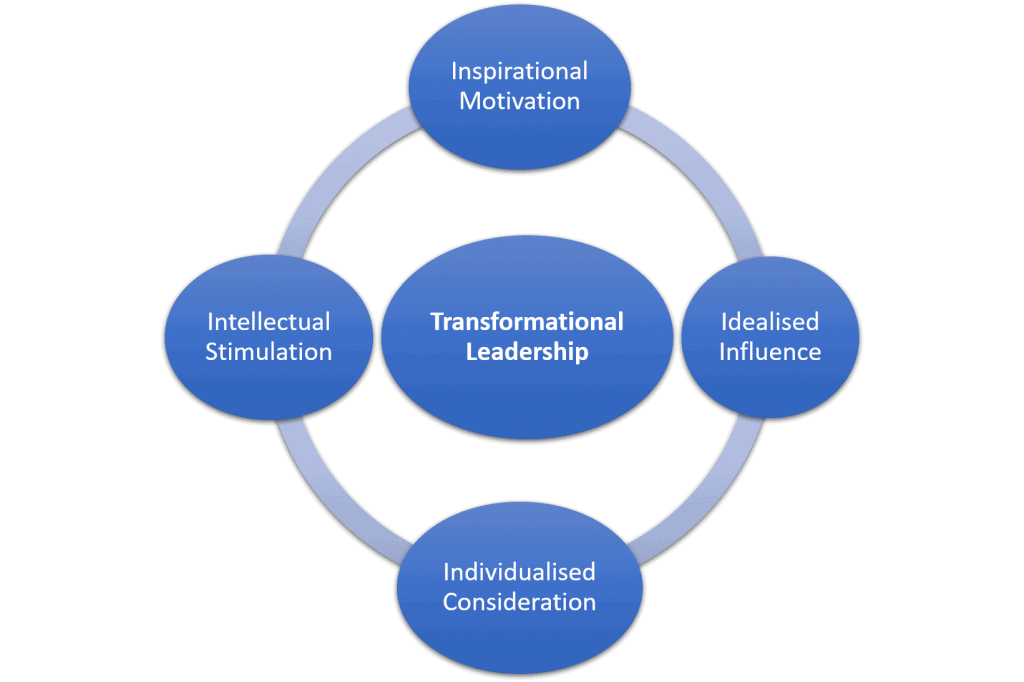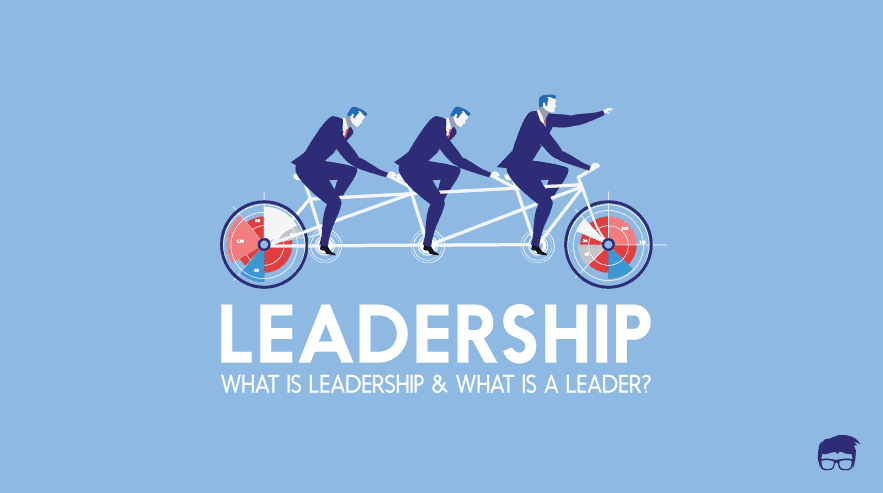Jade is held in high regard by her teammates. Her team members say that she constantly reinforces the end goal of their work, they’re loyal to her and prefer her over other leaders in the company.
Jade is a transformational leader.
No wonder:
A leader has the ability to make or break the team. It’s no secret that today, the workplace has evolved, traditional leadership methods bear minimum fruits. Now is the time where all employees focus on growth and development and it takes a true leader to identify a person’s potential and help them realise it.
Amongst the many leadership types, Transformational Leadership is probably one of the most coveted. This article will take a close look at what transformational leadership means, its model, pros and cons, and contrast it with Transactional Leadership.
What is Transformational Leadership?
Transformational leadership is a leadership type where leaders encourage, inspire, and motivate their employees to transcend their own self-interest and to innovate and create a change to achieve the best for the organisation.
Transformational leaders often inspire change driven by a strong purpose and ultimately create an environment characterised by trust and innovation.
In its ideal form, the objective of transformational leadership is to lead the followers into becoming good leaders in future. This type of leadership is known to enhance the motivation, morale and performance of employees through a variety of mechanisms.
4 Is of Transformational Leadership
In the year 1985, Bernard A. Bass based the modern idea of transformational leadership around the following four elements:
- Inspirational Motivation: Transformational leaders inspire each person at a singular level to help them align their goals with that of the organisation. They keep their employees motivated and communicate their expectations to individual followers.
- Intellectual Stimulation: These leaders encourage an environment of innovative thinking. They create a space where people tap into their full potential and also challenge others to do the same.
- Idealised Influence: Transformational leaders are role models for their employees, they exert influence on the group and are deeply respected by the team for their vision and high standards of performance.
- Individualised Consideration: These leaders display care and consideration for their team members, and value their inputs. They strive to create an environment of trust and develop in their followers’ leadership skills.
Transformational Leadership Characteristics
Leadership is a fluid practice, it is constantly changing and reinventing itself. Good leaders understand their role and work to maximise worker efficiency and achieve organisational goals. Transformational leaders pay attention to the developmental needs of their followers and strive to increase followers’ awareness by encouraging them to look at old problems in new and innovative ways.
Now:
The following points explain the individual traits of Transformational Leaders
- Visionary: They are committed to the organisation’s development and guide their followers through change and motivation.
- Positive Role Model: The followers emulate their leaders’ actions because they look up to him/her. Transformational leaders use empowering language to elevate efficiency and ensure high team morale.
- Risk Tolerance: Transformational leaders realise that there is no safe route to change. Who doesn’t take risks? However, transformational leaders take calculated risks and rely on research and inputs from their team while doing so.
- Communicative: Transformational leaders ensure that the company’s vision is effectively communicated to each member of the team. They possess good interpersonal skills and are considerate towards each team members’ ideas.
Transformational Leadership vs. Transactional Leadership
Often known to follow the “carrot and stick” approach to leadership, transactional leaders use rewards and punishments to induce good behaviour. They focus on supervision and group performance. Further, they aim to maintain the status quo of the organisation and tend to be more passive than transformational leaders.
On the other hand,
Transformational leaders set clear goals and high standards of performance while actively interacting with the employees themselves. They aim to improve the status quo and focus on individual performance as well.
The following table summarises the differences between the two –
Transformational Leadership | Transactional Leadership |
|---|---|
Enhance the status quo of the organisation | Maintain the status quo of the organisation |
Proactive Leadership | Responsive Leadership |
Goals achieved through high moral values, innovation, and creativity | Goals achieved through a policy of Reward and Punishment |
Followers transcend self-interest | Appeals to followers’ self-interest |
However,
The real question is –
Which Leadership Style Is Better?
While transformational leaders try to sell their vision to their followers, transactional leaders divide roles and responsibilities and tell each member what to do. Outwardly, it might seem like transformational leadership is better, but that’s not true. There isn’t a definitive answer to this question as both transformational and transactional leadership are well suited for different situations.
Consider a crisis situation. These situations require linear progress and set rules and regulations are more effective under such circumstances. Here, transactional leadership is better suited.
Many big corporations such as Hewlett-Packard, NFL coaches, and high-level military members use the transactional leadership model. Even for minimum wage employees, transactional leadership is better suited.
Pros And Cons Of Transformational Leadership
Transformational leadership may seem like the ideal form of leadership, however, there are also some drawbacks to it. Following lists the advantages and disadvantages of transformational leadership in an organisation:
Pros
- Empirical evidence suggests that transformational leadership is positively correlated with job satisfaction. Increased involvement of subordinates and a more contented workforce leads to a more balanced workplace
- Effective transformational leadership improves the status quo of the organisation as employees are motivated and identify with the organisation’s goals. This ensures a higher level of efficiency and output
- Employees feel empowered and trusted by the manager, thereby feeling confident and loyal towards the organisation
- Easy resolution of conflicts through collaboration and a good understanding of relationships
- Transformational leadership results in long term relationship building as employees feel valued and respected with the knowledge that their leader has invested in them and trusted them
- The focus of transformational leadership is to create an environment of trust and cooperation. Thus, employees enjoy the freedom of failure and have the opportunity to learn from their mistakes. This freedom to fail turns the company into a hub of innovative thinking
Cons
- Transformational leaders can struggle with detail as they focus too much on the bigger picture. They need to maintain connections with detail-oriented executives to help them overcome their lack of transactional focus
- Often, transformational leaders can set unrealistic expectations for their employees which can cause employee burnout. There can be increased pressure to maintain high productivity at all times worsened by unreasonable deadlines and exhaustion
- Transformational leadership can have negative consequences. Influential leaders leave a great impression on humanity… virtuous or wicked. Consider Adolf Hitler. Hitler personified transformational leadership and is the most extreme example of a negative transformational leader. He had a vision that appealed to his followers that drove them away from humanity and moral sense.
Barriers To Transformational Leadership
No leadership comes without challenges. Following lists the barriers, or what hinders the implementation of transformational leadership –
Resistance To Leadership
It is unrealistic to expect each employee to be on the same boat. There might be some who are content with the status quo of the organisation and low job performance standards. Such employees don’t desire to seek new opportunities or develop new ways to perform tasks.
Such individuals might perform better under transactional leaders, with defined roles and responsibilities.
Unclear Objective
If the focus is solely on new ideas and creativity, employees might lose sight of the end objective. This would result in the same task taking a lot longer to complete. Individual development is good, but not so much that it hinders the growth of the organisation.
Transformational Leadership Examples
Transformational leaders are catalysts of positive change. Founder of Standard Oil, John D. Rockefeller, founder of Virgin Group, Richard Branson, are two of the most prominent transformational leaders.
Richard Branson
Branson is known for his fun and friendly business establishment. He considers himself a “rule-breaker” and prefers to maintain healthy leader-member relations. Further, he believes in giving freedom in decision making and carefully selects his employees.
He has successfully built 400 companies under the name of “Virgin”, thanks to his participative and goal-oriented approach. His leadership style is far different from transactional leadership. He doesn’t consider money to be a measure of success. For him, and his followers, the excitement is the challenge. This is the main reason why Virgin staff, even though paid a little less than market rates, yet are happy to work for Virgin because they enjoy being in the team.
John D. Rockefeller
Believed to be the wealthiest American in history, John D. Rockefeller, is known as one of the greatest leaders of all time. He was known for his perseverance and benevolence towards others. He routinely praised his employees and selected them with care. He possessed several noteworthy traits that made him stand out and many leaders today learn from his success and apply his principles in their organisation.
Go On, Tell Us What You Think!
Did we miss something? Come on! Tell us what you think about our article on the transformational leadership in the comments section.
An entrepreneur with a background in management, looking for opportunities to learn and grow every day.










